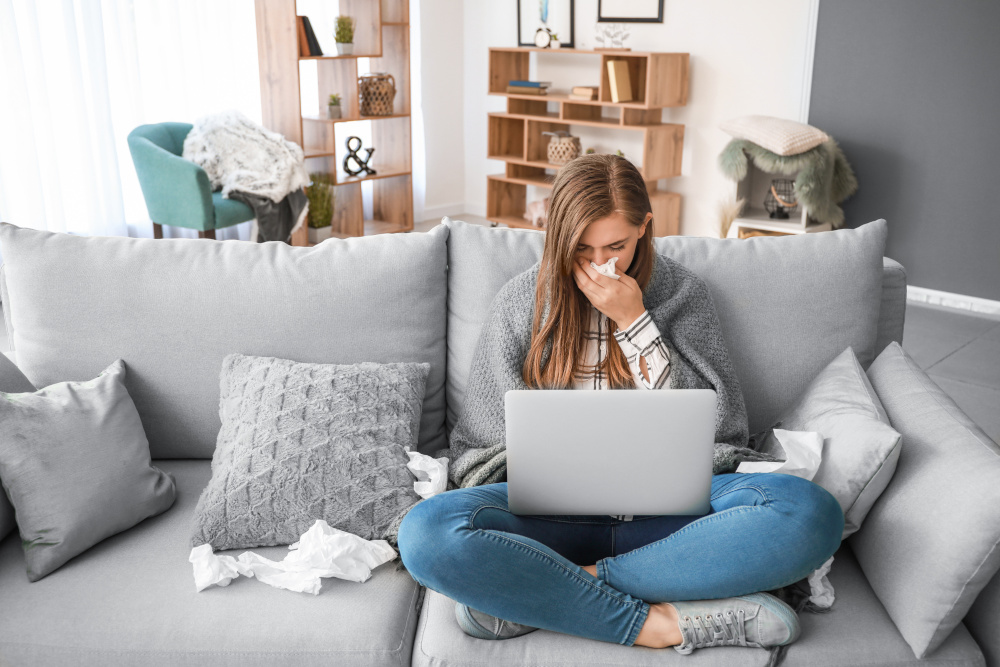
While fall can be an exciting time to be in San Antonio many people encounter severe allergies that make being outdoors an unpleasant experience. For the 45 million Americans who also suffer from seasonal allergies, fall can mean sneezing, itchy eyes and congestion. Beginning in mid-August and lasting all the way through October, the fall allergy season is now in full effect.
Ragweed, the heaviest pollinator in Central Texas during autumn, is one of the most common fall allergy triggers. Its damage is widespread. Some studies have shown that up to 20 percent of Americans are allergic to ragweed. A single ragweed plant can release more than one billion grains of pollen in a season. And, while staying indoors can help avoid ragweed, pollen can travel great distances — as much as 400 miles away from the plant — so it can be tricky to avoid. Ragweed causes hay fever, with symptoms that include sneezing, runny nose, stuffy nose, itchy nose and itchy, watery eyes.
Ragweed isn’t the only allergen about to peak. Fall Elm trees and at least 10 other types of weeds also pollinate during the fall season. Weed pollen counts generally peak around the beginning of October, and mold spores are also released around this time.
People tend to think of indoor mold when it comes to mold allergies, but we may actually have more exposure to outdoor mold. In the autumn, mold spores can thrive in fallen leaves and other decaying vegetation. As mold particle counts climb higher, they become increasingly irritating to people with allergies. High mold counts also contribute to breathing problems among those with asthma.

Can you avoid allergies?
Without treatment, the best chance you might have for decreasing allergy symptoms is to avoid exposure. This may mean staying indoors with the windows closed as well as avoiding outdoor activities such as sports, camping and cookouts. Routine yard work can also stir pollen and mold spores into the air. If you’re raking leaves, mowing the lawn, working with mulch or trimming the shrubs, you may want to wear a mask. These days you probably have several masks around that you can use, but the best is still an N95 mask or at least a heavy-duty dust mask.
If you must be out working in the yard, in addition to a mask consider eye protection (sunglasses, protective eye wear, etc), gloves, long-sleeved shirts and pants. Take your shoes off outside as soon as you are done with whatever you’re working on.
Pollen counts are at their highest from 10 a.m. to 4 p.m. so staying inside during those times may help reduce your exposure to the allergens. Changing your clothes after being outside can also help.
Unfortunately, attempting to escape allergies in the fall by remaining indoors may not help much. Low humidity inside homes can also be a major trigger of nasal and lung allergy irritation. Low humidity dries out mucous membranes and leads to inflammation, while cold, dry air causes the lining of the nose to become swollen, resulting in a stuffy and runny nose.
Since it is impossible to stay indoors all the time, there are other ways to defend against fall allergens. Prescription-strength antihistamines and nasal steroids are now available over the counter. Antihistamines help reduce symptoms by blocking the histamines, or inflammatory chemicals, that cause them. Decongestants can also help reduce stuffiness. Lastly, eye drops can be added to your regimen to decrease itchy, watery eyes.
Additionally, be sure to clean your home thoroughly before switching on the heat for the first time. Using an air filter can help reduce the amount of pollen and dust inside your home.
An effective treatment to allergies.
If, after trying over-the-counter treatments, you continue to experience allergy-related issues, your next step may be contacting your local allergist concerning allergy immunotherapy.
Allergy immunotherapy can be a more proactive approach for allergy suffers, and today comes in the form of injections, drops or tablets. Immunotherapy helps your body get used to the allergens that affect you. Your doctor will prescribe a series of injections or allergy drop doses of the allergy-causing agent until the body no longer mounts an immune response. Some studies have shown up to one-third of patients can achieve significant relief from their allergies by the end of a three-year immunotherapy treatment.

What’s Causing Your Symptoms?
The only way to truly tell what it is that’s affecting you is through allergy testing. Dr. Hallett offers a full range of allergy diagnostic testing to evaluate and manage allergies and asthma. He is the first — and most experienced — fellowship-trained, board-certified allergist in Austin to offer the more effective, high dose European protocol allergy drops. If you’d like to overcome allergies in the fall, come discover a treatment that is more satisfying than staying indoors or using over-the-counter drugs.